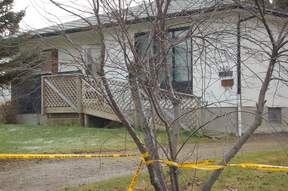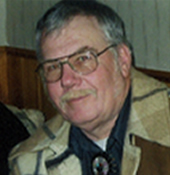Another year has come and gone in the Oct. 16, 1986 slaying of 15-year-old Kerrie Ann Brown, Thompson’s oldest unsolved murder case, which many 33 years later still believe is surrounded be a conspiracy of silence. But it was a year that saw the most comprehensive media ever done on the case, primarily by David Ridgen, a documentarian filmmaker whose original true-crime podcast “Someone Knows Something” spent season five looking at the Brown case. “Someone Knows Something” examines unsolved cases of missing or murdered individuals, and it is produced by CBC Radio One.
Ridgen’s earlier work has been credited with reopening other cold or historical cases, which have led to arrests and convictions (Mississippi Cold Case, Confession to Murder and A Garden of Tears). In August, Ridgen noted he was working on season six, as well “as working on a new season five episode.”
“Someone Knows Something” is CBC’s most-downloaded original title, the network said Aug. 15. In its first-ever development slate of podcast-to-television series, the public broadcaster plans to adapt five popular, original CBC Podcasts, including “Someone Knows Something” with First Generation Films, a Toronto-based multi-media production company founded by Canadian producer Christina Piovesan, for the screen as a TV dramatic series.
Ridgen’s work last year on the Brown case featured a fascinating at-length interview with a key 1987 preliminary hearing Crown witness, Sean Simmans, living in Melfort, Saskatchewan at the time of the interview, as well as shining a spotlight on the early police investigative work done in 1986 by then Corp. Dennis Heald, and Const. John Tost, the two original lead investigators from the Thompson RCMP detachment, and Marnie Schaefer, a civilian RCMP telecom operator in Thompson at the time of the murder. Ridgen also took the investigation closer to home, talking to Ian Brown, Kerrie’s older half-brother, on a trip to Selkirk with their brother, Trevor Brown (https://www.cbc.ca/player/play/1362084931649) about his whereabouts the night Kerrie disappeared. Trevor was a year older than Kerrie.
Ridgen was also contacted by a woman in Thompson who said she remembers hearing her former boyfriend in Nelson House, Fred Spence, making reference to a white girl getting killed. Fred Spence has denied any involvement in Brown’s murder.
Schaefer, the former RCMP telecommunications operator, said she was working the night shift when the phone rang with an unknown caller around 2 a.m.
“He had said that he had just killed someone,” Schaefer recalled. “Seemed to be terrified that I was recording the conversation that we were having,” she told Ridgen.
The call came two hours after Kerrie Ann Brown vanished from the house party on Thursday, Oct. 16, 1986 – and almost 14 hours before she was reported missing.
That call may or may not have been followed up on, depending upon which RCMP officer you believe listening to “Someone Knows Something.”
Brown was slain sometime after attending a party at Doug Krokosz’s residence on Trout Avenue in Westwood on Thursday night Oct. 16, 1986. Most of those in attendance at the Trout Avenue party were from ages 14 to 17. The party was held on a Thursday night because there was no school the next day for Kerrie and the others at R.D. Parker Collegiate. A 12-year-resident of Thompson at the time of her death in 1986, Kerrie’s family came to Thompson from Burk’s Falls, Ontario. A Grade 10 student at R.D. Parker Collegiate, she had previously attended Juniper and Eastwood elementary schools. Her mom and dad, Ann and Jim Brown, had moved to Thompson like many so Jim could work in the mine at Inco, while Ann worked at Thompson General Hospital as a medical transcriptionist. Ann Brown died of cancer 15 years after Kerrie’s murder.
Kerrie was to walk home from the Trout Avenue residence that night with Nicole Zahorodny, who was the last person to see Kerrie at the party the night that she disappeared, but Zahorodny went back into the party for a few minutes. Krokosz, a year older than Kerrie, recalled for Ridgen trying to convince Kerrie to wait for Nicole instead of walking home alone. Kerrie asked Krokosz to find Nicole for her, he said, which he did while Kerrie waited at the stairs. When he returned some time later, Kerrie was gone, after stepping outside apparently to wait. When Zahorodny returned, Kerrie was gone. Several witnesses reported Kerrie was seen getting into a van between 10:30 p.m. and 11 p.m. Others believe she took a taxi to Brandon Crescent just before midnight. Or she may have walked somewhere from the party.
Two days after the party, Donna Covic, and another woman from the riding stable, discovered Kerrie’s nude body in a wooded area close to the hydro line between the horse stable and the golf course access roads. Her body was found on Saturday, Oct. 18, 1986, around 2 p.m. Brown had been sexually assaulted and severely beaten, bludgeoned repeatedly about the face and head causing massive injuries. A large, bloodstained stick was found at the scene.
A vehicle got stuck in the mud there and a blue and red air mattress and a black rubber floor mat were used to try and gain traction and extricate the vehicle, RCMP said publicly in 1996. Two eyewitnesses had spotted a white van and an older model mid-60s green sedan-type car at the scene just hours after Brown, who had been wearing a Pittsburgh Penguins hockey jacket earlier in the evening, disappeared from the party. Crime scene DNA samples gathered in 1986 came from at least two different men RCMP said in 1996, adding they have always believed more than person was involved in the killing.
In 2012, the RCMP began conducting a full review of Kerrie Ann Brown’s murder investigation. They rehired a retired homicide investigator, Sgt. Bert Clarke, who retired in 2009 as the commander-in-charge of the RCMP’s homicide unit in Manitoba, to assist in the review of the investigation, along with a second rehired former homicide investigator.
The two retired homicide investigators did not work on the Brown murder originally, although they were aware of it, but were brought into assist the historical case unit, which is the official RCMP name for Manitoba’s cold case squad, by bringing their expertise to the complex case by taking a fresh look at it. A daunting task given there were more than 2,000 subjects recorded and documented in the file.
DNA samples searching for suspect matches have been taken, most voluntarily, some pursuant to court orders, from more than 100 people across Canada in the decades since the crime. Administrative personnel were assigned to the case to “digitize” the investigation for present and future purposes.
The Brown cold case is the largest unsolved homicide investigation (more than three dozen banker boxes of investigative file material) that the RCMP have in Manitoba.
A remarkable letter to the editor of the Thompson Citizen appeared in the newspaper a few days after Kerrie Ann Brown’s murder. Written anonymously and signed with the nom de plume, “From her friends who want justice,” the author says in the singular that she is a 14-year-old girl and was a “good friend of Kerrie Brown.” She goes onto write – and remember, this appeared in print, published as a letter to the editor: “I have also heard that their (sic) was another murder on Wednesday [Oct. 15, 1986] and if that is true, how come we weren’t warned. I can understand trying to keep the whole thing quiet, but not warning the public just doesn’t seem right to me.” The same woman, age 20, apparently wrote a second letter to the editor six years later, signed again anonymously, but this time with a slight variation and the nom de plume being, “Her friends who believe in justice. ”
Shortly after Kerrie Ann Brown’s murder, Krokosz, Zahorodny, Brian Lundmark, now a Thompson city councillor, Vince Nowlin, who served as a trustee for School District of Mystery Lake school board between 2010 and 2014, Craig Jordan, Guido Oliveira, also a trustee, who who now chairs the finance, property and personnel committees of the School District of Mystery Lake, Kathy McGee and Janet McGee, were among those who formed an ad hoc group called “Youth for Tomorrow,” and began to raise money to create the Kerrie Brown Memorial Scholarship.
It was Brian Lundmark and Geraldine Hornan who came to the Brown residence about an hour after Kerrie’s body was discovered and told Trevor the news that a body had been discovered.
Ridgen also learned in the course of his investigation that there is no transcript of the 1987 preliminary hearing for a man charged with Kerrie Brown’s murder – the charges were dismissed by the judge due to lack of evidence.
Patrick Sumner, the only suspect ever charged to date in connection with the case, still lives in Thompson. His family moved here in 1968. He was 22 when he was charged in 1986 days after the crime with first-degree murder in connection with Brown’s murder in a case that was largely circumstantial. There were about 120 people in the courtroom for Sumner’s arraignment in 1986, while another 60 or so waited outside.
Sumner was freed four months later after being discharged by provincial court Judge Charles Newcombe without being committed to trial after a three-day preliminary hearing ended Feb. 20, 1987. Crown attorney Dale Perezowski prosecuted the case at the preliminary hearing. Richard Wolson, a Winnipeg criminal lawyer, recognized as one of the best in the country, represented Sumner. Newcombe ruled there wasn’t admissible evidence upon which a reasonable jury properly instructed could return a verdict of guilty, which is the legal test in Canadian law for committal to trial. Then NDP Manitoba attorney general Roland Penner did not exercise his discretion to issue a rare preferred indictment, which would have sent the case directly to trial, although his department considered that option. Ridgen also learned that the Brown family can’t obtain a new copy of her autopsy report to replace the one they lost. “The RCMP have told the chief medical examiner not to give it to us,” Trevor Brown said last year.
Carlton Jackson and Robert Delaronde were also looked at as persons of interest by Ridgen.
Jackson was questioned following Kerrie’s disappearance, according to her brother Trevor and father Jim, and afterwards came to their house to tell Jim that he had nothing to do with her killing. Delaronde was implicated after the fact, mainly due to the fact that he had a somewhat violent history and had hanged himself in 1992, leading people to speculate that he may have been involved, though he was also diagnosed with bipolar disorder.
Ridgen was told that Delaronde’s parents had not consented to his DNA being taken because they were worried that police would try to pin the crime on him after Sumner’s experience. Delaronde’s former girlfriend Heather McIvor also said that she had not let police take DNA from the child she had with Delaronde when police begin re-investigating the case more thoroughly several year’s after Delaronde’s death.
McIvor said Delaronde had been having a party on the night of Kerrie’s disappearance and that he had noticed Jackson and another man in attendance had left for a long time before returning. Ridgen was told that Jackson may not have been able to remember what happened back then after receiving a blow to the head in a beating, but Delaronde’s sister told him that she had been recognized by Jackson in Winnipeg and that she didn’t notice anything off about him.
Trevor Brown first contacted David Ridgen to see if he would be interested in investigating the case in the spring of 2017, CBC says.
Ridgen, who first became involved in investigating unsolved crimes while working on a documentary about civil rights workers killed in Mississippi in 1964 by the Ku Klux Klan, said he was aware of the case before Brown reached out to him, but when he was contacted it hadn’t moved from the pile of possible Canadian crimes to investigate onto his active investigation subjects.
In early January, “Snow Day Podcast,” a local society and culture podcast, featuring Bruce Krentz, Les Hansen, George Alvarez, and special guest, Guy Hansen, which has been broadcast since early 2017, took a look at the case (https://www.podbean.com/media/share/pb-iiy7w-a4270a?fbclid=IwAR1DApTH4ZrfpVfx_qg2zBmlOWNQ3xbO2hx8LHcAgtt-aJfSfYmDyosiJj0#.XEdxdR4XmdM.facebook), offering an insightful discussion of the mindset, worldview, class issues, and historical issues at play among Kerrie Ann Brown’s high school peers in October 1986. It no doubt broke some previous taboos regarding what was and was not discussed around the kitchen table, and why or why not, in Thompson that long-ago fall.
Darren Lovell from Wimborne Minster, a market town in East Dorset in southwest England, has recently written a song as a reflection about the unsolved murder of 15-year-old Kerrie Brown. You can listen to it at: https://soundcloud.com/darrenwlovell/kerrie-brown?fbclid=IwAR3Q95S43q8THHTi2Zi3mRPHjhYdYAy8NE-n5OvwlPWWGGq1EOJKdqK8PlI
Lovell says he was inspired by season five of “Someone Knows Something.”
You can also follow me on Twitter at: https://twitter.com/jwbarker22





